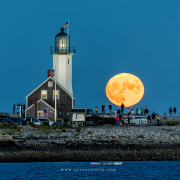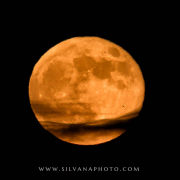How to Photograph Carnival Lights
When was the last time you went to a carnival? You know, the traveling show you looked forward to as a kid that marked the start of summer. Yes, they are noisy, loud, and crowded but prime fodder for photographing a variety of whirling multi-colored lights. Every carnival is a bit different, albeit with similar rides. The configuration of the rides change from place to place, so they are never a redundant scene. Spring starts the season of carnivals. Most likely one will pop up in a church parking lot or at a town nearby.
The beauty of photographing carnivals is not just the pretty lights but the challenge of creating images that aren’t just snapshots. The quest is to capture the energy and the action, while dodging the crowds that are meandering about, usually dazed by the sights, sounds and aromas. Add to this the challenge of capturing the stopping and starting rides with slow shutter speeds. Exciting stuff!
Timing
Although carnivals start their day during sunlit hours, I like to arrive right around the start of blue hour. Sometimes the remnants of sunset provides nice colors as well. The colorful lights of the rides now begin to emerge.

Nikon D780 | 16-35 mm lens | ISO 100 | f/10 | 1/4 second | Single Frame

Nikon D780 | 24-120 mm lens | ISO 100 | f/22 | 1.6 seconds | Single Frame
The Recipe
What you need is a DSLR or mirrorless camera, a tripod, and a medium to wide telephoto lens. You can use any lens really, The only limit is your imagination.
To start, set your camera as follows.
- ISO 100 (or whatever your camera’s base ISO is).
- Set your aperture to f/16, f/22 or f/32 (whichever is highest for the lens you are using)
- Shutter speed 4 to 8 seconds.
- Use an ND filter if necessary to help slow down the shutter.
- Shutter release / or set your shutter on a 2 second delay.
Your shutter speed may go up or down depending on the scene.
Survey the scene and position yourself close to the concession or game stands so you minimize your exposure to walkers by. Other good locations are corner barricades of the rides where they intersect. Try to stay off the paths and out of peoples way (we can take up a lot of space with a tripod!). Set up your tripod and keep a hand on it should someone accidently bump into it. I have a habit of keeping the camera strap around my neck as an added level of protection.

Nikon D780 | 24-120 mm lens | ISO 100 | f/22 | 3 seconds | Single Frame
While the shutter is open, try zooming in and out. This creates a spirograph effect, especially on the Ferris Wheel. Learn more about ICM (intentional camera movement) in this post.

Nikon D780 | 16-35 mm lens | ISO 50 | f/22 | 15 seconds | Single Frame

Nikon D780 | 16-35 mm lens | ISO 50 | f/22 | 4 seconds | Single Frame
Add to the challenge by photographing two rides or even three rides at once. It is all a matter of timing and balance. No image will be identical and each image is a surprise.

Nikon D780 | 16-35 mm lens | ISO 50 | f/22 | 8 seconds | Single Frame
If your camera has the ability, try an in-camera double exposure. You can also try blending two images in post.
Carnivals are enjoyable, no matter what your age. Take your camera out for some fair weather fun. On your way out, stop off for some yummy fried dough.
For more tips on photography right to your inbox, subscribe to my website.
Taking photos and want to make them more compelling?
Art isn’t just for walls. Art is also to hold in one’s hands.

 Silvana Della Camera
Silvana Della Camera Silvana Della Camera
Silvana Della Camera

 Silvana Della Camera
Silvana Della Camera Silvana Della Camera
Silvana Della Camera



Leave a Reply
Want to join the discussion?Feel free to contribute!